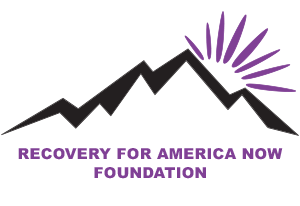Enabling or Helping?
The disease of addiction (substance use disorder) is a progressive illness that gets worse with continued use. This is true whether a person gets their fill at a bar, crack house, or a state-sanctioned safe injection site.
In our view, recovery not only reduces harm but offers a life of abundance, meaning, and the opportunity to love and be loved. And that’s got to be better than a federally funded cotton swab, ointment to soothe charred lips, or the crack pipe itself. Last February 2022, the notion that taxpayers were funding free crack pipes grabbed the Nation’s attention. While Senator’s like Senator Blackburn dropped their opposition after receiving assurance from HHS Secretary Becerra that “taxpayers will not be funding crack pipes”, the actual grant solicitation tells a different story. Taxpayer dollars are distributed via grant solicitations, and depicted below is the grant that funds this activity. This Harm Reduction Grant clearly stipulates that “safe smoking kits” will be fully funded at taxpayer expense. To calm the outrage, we were guaranteed that crack pipes would not be contained in the federally funded “safe smoking kits” that will be distributed in underserved communities. This begs the question: How is paying for lip balm and other vending machine paraphernalia for methamphetamine and crack cocaine inhalation any different from supplying the actual smoking utensil?
Image: Grant announcement from the Department of Health and Human Services. February 2022.
Furthermore, there will be no accountability once this money reaches large municipalities. This grant supports “harm reduction,” which is predicated on the belief that underserved people are incapable of recovery and should accept their ill-fated life. We vehemently support the miracle of recovery, which is achievable for all, especially those who may get help sooner if not enabled.
Also contained within this grant is the stipulation that grantees, those that receive money, need to assemble a harm reduction advisory council that is comprised of PWUD (people who use drugs), harm reduction service providers, individuals in recovery, professional treatment providers and public safety officers, to guide program activities and project implementation. We need to ask, what exact skill set do PWUD (people who use drugs) possess? Is getting high now worthy of praise? This appears to trivialize the nature of addiction as being a normal hobby like golf. Sort of like, “Hey mom, it’s all good, I’m just somebody who uses drugs”.
Furthermore, do PWUD have to be sober to attend the meeting; can they bring beer? What about PWGD “people who get drunk”? Are PWUD folks suffering from a severe substance use disorder (life-threatening), or do they just like getting intoxicated? If they are people with a severe substance use disorder, are we inadvertently minimizing their ailment and validating their self-destructive behavior? This phraseology reduces the compulsion to use (addictive cycle) that traps people in a state of needless suffering.
Last year, 100,000 Americans tragically died from a drug overdose, and many families are still grieving the loss of a loved one. We understand the crucial need to address stigma regarding substance use disorders and mental health. However, we need to recognize the difference between “Enabling vs Helping”. Providing taxpayer-funded “safe-smoking kits”, vending machine paraphernalia, and validating “drug abuse” PWUD, we are encouraging the continuation of self-destructive behavior. RANF welcomes everyone to join us in this fight to bring recovery to all. Celebrate Life – Celebrate recovery because “nobody is too sick to recover.”


